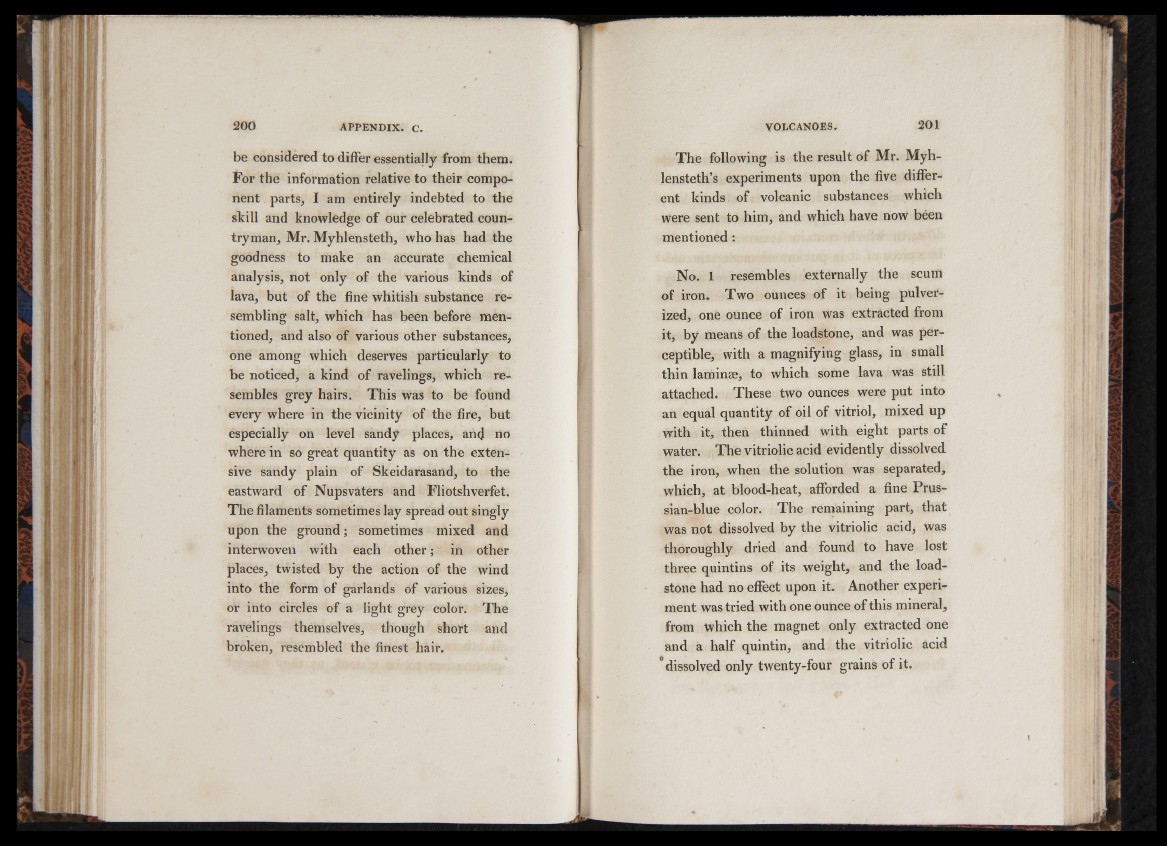
be considered to differ essentially from them.
For the information relative to their component
parts, I am entirely indebted to the
skill and knowledge of our celebrated countryman,
Mr. Myhlensteth, who has had the
goodness to make an accurate chemical
analysis, not only of the various kinds of
lava, but of the fine whitish substance resembling
salt, which has been before mentioned,
and also of various other substances,
one among which deserves particularly to
be noticed, a kind of ravelings, which resembles
grey hairs. This was to be found
every where in the vicinity of the fire, but
especially on level sandy places, an<J no
where in so great quantity as on the extensive
sandy plain of Skeidarasand, to the
eastward of Nupsvaters and Fliotshverfet.
The filaments sometimes lay spread out singly
upon the ground; sometimes mixed and
interwoven with each other; in other
places, twisted by the action of the wind
into the form of garlands of various sizes,
or into circles of a light grey color. The
ravelings themselves, though short and
broken, resembled the finest hair.
The following is the result of Mr. Myh-
lensteth’s experiments upon the five different
kinds of volcanic substances which
were sent to him, and which have now been
mentioned :
No. 1 resembles externally the scum
of iron. Two ounces of it being pulverized,
one ounce of iron was extracted from
it, by means of the loadstone, and was perceptible,
with a magnifying glass, in small
thin laminae, to which some lava was still
attached. These two ounces were put into
an equal quantity of oil of vitriol, mixed up
with it, then thinned with eight parts of
water. The vitriolic acid evidently dissolved
the iron, when the solution was separated,
which, at blood-heat, afforded a fine Prussian
blue color. The remaining part, that
was not dissolved by the vitriolic acid, was
thoroughly dried and found to have lost
three quintins of its weight, and the loadstone
had no effect upon it. Another experiment
was tried with one ounce of this mineral,
from which the magnet only extracted one
and a half quintin, and the vitriolic acid
° dissolved only twenty-four grains of it.